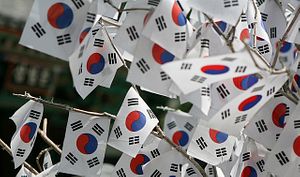In November 2019, South Korea’s population shrank naturally for the first time since statisticians began tracking monthly birth figures in 1981. With the population officially in decline, one in six South Koreans are expected to be over the age of 65 by 2050, up from about one in 11 in 2019. This demographic transition carries many consequences, but one notable effect is economic as the country runs out of working-age people to staff its industries, conduct research, and establish enterprising businesses.
There are straightforward solutions to overcoming this challenge. The country could increase its working-age population by encouraging immigration and employing its existing workforce more productively. A political consensus around building a more inclusive society would set the country down these paths. However, political discourse in South Korea is hamstrung by constituencies that are more concerned with the perceived loss of their traditional status than the threats that the current trajectory presents to everyone.
In June 2021, the Ministry of Justice put forward a revision to the Nationality Act that would make it easier for the children of permanent residents to receive South Korean citizenship. The proposed changes extend citizenship to children of permanent residents who have lived in South Korea for two or more generations, or permanent residents with “blood or cultural ties.”
However, early drafts of the new citizenship requirement sparked a backlash from those who believe that it extends rights to “outsiders” before the government supports its own citizens. The fact that over 90 percent of those who are eligible for citizenship under the proposed rules are residents of Chinese descent appears to be a particular point of contention among detractors. A petition submitted to the Blue House with over 317,000 signatures specifically underscored that residents of Chinese descent in South Korea already receive “adequate” rights from their status as permanent residents.
These sentiments are indicative of an undercurrent of hostility toward the inclusion of communities that are arbitrarily considered insufficiently Korean. Moreover, they further hint at the perception that immigration limits the pool of resources available for the native-born citizenry.
South Korea has adopted a more liberal migration policy since the 2000s to offset the country’s declining labor pool. In addition, international marriages have increased over the past few decades. By 2019, over one in 10 marriages in the country involved a foreign-born bride or groom. As a result of these changes, approximately 2.3 million people – or 4 percent of the overall population – were foreign-born in 2018. These forces play a critical role in moderating the effects of the demographic transition.
Despite these realities, there have been persistent bouts of animosity directed at immigrant communities or prospective entrants to Korean society. Most notably during the COVID-19 pandemic, these sentiments manifested in stricter eligibility conditions for non-citizens seeking to access public assistance. While economic opportunities and the country’s soft power continue to present pull factors for migrants, the politics of exclusion espoused by these domestic voices deters the country’s capacity to further encourage immigration and fully embrace its economic dividends.
Similarly, women in South Korea are underemployed to the detriment of the country’s productivity. Authors of the 2020 Organization for Economic Cooperation and Development (OECD) Economic Survey of South Korea specifically underscored that the wide gender wage gap pushes women to quit work when they have children. And when these mothers re-enter the workforce after raising their children, they are often limited to temporary contract work or other lower-pay positions despite their high educational achievement and experience. As a consequence, their skills are not fully utilized in the economy at a time when the diminishing labor force demands more efficient use of the existing human talent.
This is not for the lack of trying. Changes in corporate culture around paternity leave are slowly distributing the burden of childcare between genders. The Moon administration is also offering cash allowances to families with newborns to reduce some childcare expenses. But these measures have not been backed with parallel efforts to help women balance their career aspirations alongside family planning.
Adding to the government’s struggle to close the gender gap in productive employment, the incumbent administration’s focus on the issue has attracted growing hostility from younger Korean men. Many young men in their 20s self-identify as anti-feminist and perceive public policy aimed at growing the female workforce as reverse discrimination. The political opposition in South Korea have capitalized on these sentiments, attacking feminism and advancing proposals to eliminate the Ministry of Gender Equality and Family. The successive electoral gains by opposition politicians who are critical of efforts to reduce the gender gap suggest that hostility to gender inclusivity will remain a salient part of public discourse in South Korea, particularly ahead of the 2022 presidential election.
Political pushback against inclusion is not a unique phenomenon to South Korea. Strong parallels can be drawn with developments in the United States where racial and gender issues are also politically divisive and economically costly. But it carries particular salience in South Korea because of its rapid demographic transition into an aging society. In this environment, public policymakers have the onus of not only crafting the right immigration and gender policies to address the looming challenges, but also craft messaging that curbs recalcitrant prejudice.

































